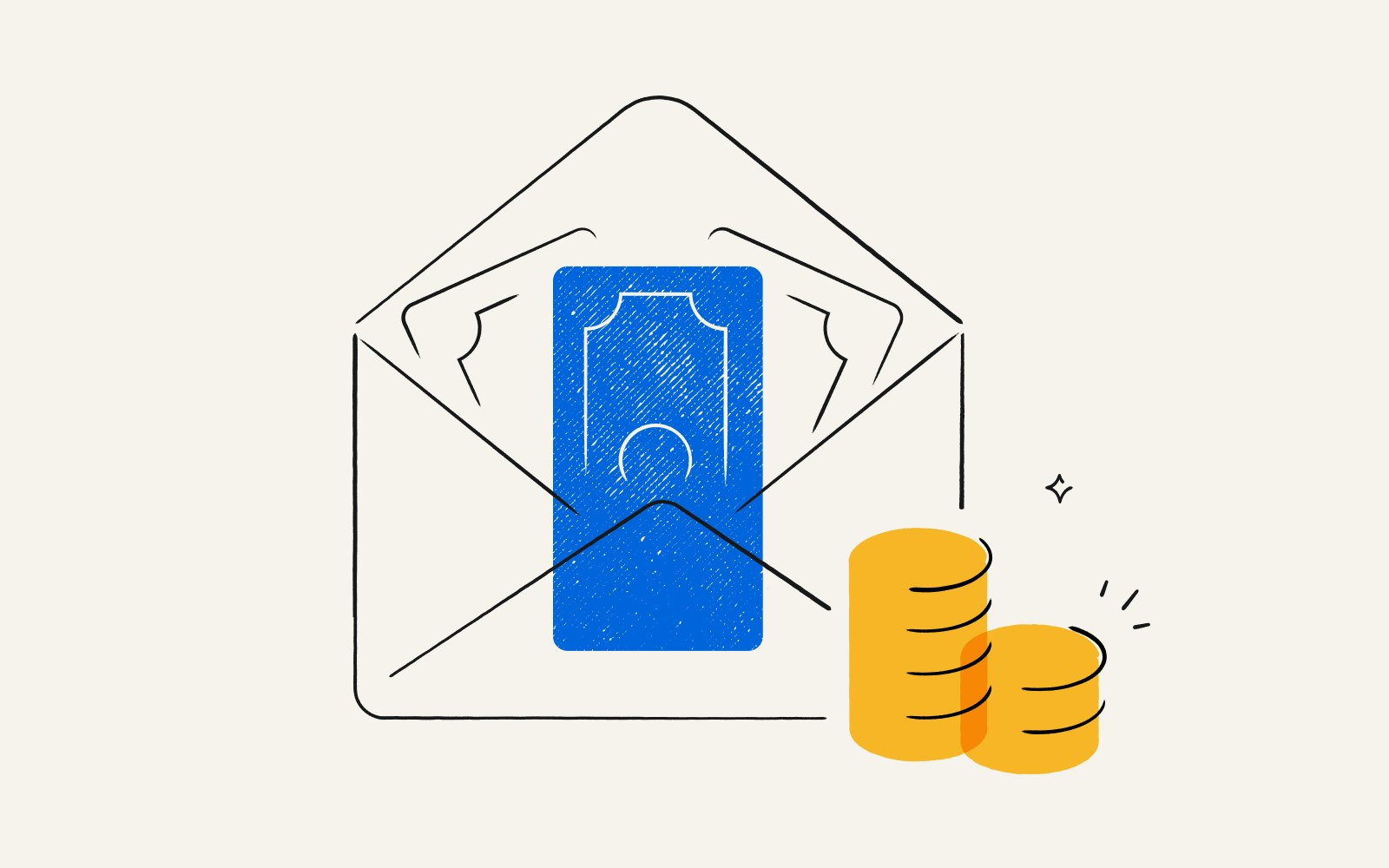What’s a sales SPIF program, and does your business need one?
By Laura Ojeda Melchor●8 min. read●Jun 13, 2025

A sales performance incentive fund, also known as a SPIF or spiff, is a short-term cash or non-cash bonus given to reward sales reps for selling a specific product. The reward can also be given for things like reaching a micro sales goal within a specific timeframe.
If you ever schlepped wares around the neighborhood for a school fundraiser, you’ve probably encountered this type of incentive. Remember the cool fidget toy promised to every kid who reached $100 in sales? Or the gift card awarded to the top seller?
These simple incentives demonstrate how effectively targeted rewards can spur sales performance.
In the corporate world, however, SPIFs are far more nuanced. There are legal, ethical, and practical considerations to think about.
This comprehensive guide covers everything you need to know about sales performance incentive programs and whether spiffs are right for your organization.
Table of contents
How does a sales SPIF work?
Companies use spiffs to boost short-term sales or hit specific targets quickly. Offering a cash bonus, a vacation, or a sought-after prize as a sales performance incentive can motivate both your sales staff and your partners.
The key to this type of program is to establish clear and achievable goals within a realistic timeframe.
While exact approaches vary, sales performance incentive funds generally follow the same basic structure:
Outline the goal. The company defines a clear goal with a time limit, for example, "Sell 20 units of Product X in September."
Define the incentive. Brands offer set rewards for any sales reps who meet the goal. These rewards can include cash, gift cards, physical prizes, or other bonuses.
Start the competition. Teams or individual sales reps work to hit the goal with real-time progress tracking that creates a sense of urgency.
Award the winner. The winner, or winners, receive their prizes, usually as soon as they hit the goal, which reinforces effective behavior and maintains motivation.
Who uses sales performance incentive funds (SPIFs)?
Sales performance incentive programs are widely adopted across sales teams, authorized resellers, and channel partners to close more deals and keep the team motivated.
It’s important to note that spiffs serve as supplementary bonuses that are in addition to commissions and base salaries (not replacements).
Organizations use spiffs to drive a variety of crucial goals:
Increase sales volume
Drive upsells and cross-sells
Connect with new prospects
Motivate teams toward incremental achievements
How do SPIFs work across different industries?
The structure and purpose of a sales incentive program can look different based on the industry you operate in.
Retail: Spiff initiatives are commonly used to motivate employees to sell items with high profit margins or push sales during promos. The promise of a short-term bonus can help employees get excited about connecting customers with these products.
Manufacturing: Distributors, dealers, or channel sales reps get spiffs to promote new products or encourage buyers to increase spend. Higher sales of new products help keep manufacturers competitive.
Insurance and financial services: SPIFs help support different types of campaigns, such as upselling existing customers on additional types of insurance.
No matter what industry you're in, incentive programs work best when they're transparent, thoughtfully designed, and ethically implemented.
SPIF vs. SPIV vs. commission: what’s the difference?
SPIV is basically an alternative term for a SPIF. Both terms stand for “sales performance incentive fund,” although some regions or industries may prefer one spelling over the other. Some companies use SPIV to define an ongoing initiative whereas SPIFs are short-term rewards.
A commission is completely different from SPIFs/SPIVs. As a standard, ongoing payment based on completed sales, commissions make up part of a sales rep’s total compensation package.
For example, say a sales rep earns 10% commission on each sale they make. If they sell a software package worth $5,000, they'd earn $500 in commission, regardless of other incentive programs on offer.
| SPIF | Commission | |
|---|---|---|
| Purpose | Motivate specific short-term performance | Compensate regular sales performance |
| Duration | Temporary (campaign-based) | Continuous |
| Payout structure | One-time bonus (cash, gift card, prize) | Portion of each sale |
| Recipients | Sales reps, resellers, channel partners, or any other contributors who impact the campaign | Sales representatives |
What are common compliance pitfalls of sales incentive programs?
While SPIFs can effectively drive short-term results, they also have potential complications for ethics and compliance:
Lack of transparency: Any good incentive program needs crystal-clear rules, payment amounts, and timelines established upfront. Map out your plan and make sure your tax and legal advisors weigh in before deployment.
Unfair practices: Favoritism can't coexist with sales performance incentive programs. Every participant needs to have a fair shot of earning the same rewards on the same timeline. Avoid excluding any individuals or groups unless you have legitimate business justifications.
Third-party channel conflicts: If you offer SPIFF sales incentives to distributors or third-party resellers, make sure you're not violating any partner agreements or stirring up tension with your internal sales teams. Better yet, if you offer an incentive program to external teams, offer it internally too.
Tax and payroll complications: Incentives like cash and gift cards typically count as taxable income. If payroll fails to withhold taxes on cash-equivalent incentives, there can be consequences for both the recipient and the business. This is why it’s essential to get program sign-off from your finance team.
Regulatory violations: Highly regulated industries (such as healthcare and finance) face strict laws meant to prevent bribery, conflicts of interest and unethical influence. If used in the wrong context, SPIFs can raise legal red flags for your business.
Complete legal review is key to avoiding compliance issues and running a successful incentive program.
Do SPIFs actually boost motivation?
Sales incentive programs certainly can boost sales and short-term motivation, but use them carefully. Spiffs shouldn’t replace fair compensation, and relying too heavily on them can affect your sales team’s performance.
According to Harvard Business Review article written by sales experts Scott Edinger and Lisa Earle McLeod, spiffs can sometimes backfire. “When salespeople push spiffed products, customers quickly sense they’re targets, not partners, eroding trust while the consultative approach disappears.”
The key is to find a balance between short-term sales goals and what Edinger and McLeod say is most important of all, which is “equipping sellers with a clear understanding of why the product was developed and how it will help customers.”
5 best practices for creating a SPIF program
When done well, sales incentive programs help your sales representatives identify more people who would benefit from your products, rather than simply sell to meet quotas and get the reward. There are several best practices you can use alongside your program to prep your sales force:
1. Educate sales professionals on products
Reps who believe in the product are more likely to sell to people who can genuinely benefit from it rather than sell just to close deals. Ensure your sales representatives have deep knowledge of product features and benefits, as well as customer insights that define the ideal customer.
2. Promote customer-centric sales tactics
Give your sales team talk tracks and sales collateral that focus on customer pain points and address how the product or service solves for them. The conversation should stay focused on solutions.
Include sales incentive-related roleplay in your sales training curriculum. Show your reps how to balance their goals of getting the reward with genuine customer discovery. This helps them avoid getting sucked into brute-force pitch mode.
3. Tie SPIFs to qualifying behavior rather than volume alone
Rather than offering rewards solely based on the number of units sold, include additional quality criteria:
Identifying right-fit customers
Demonstrating value alignment
Using approved sales processes
4. Survey your customers
Gather post-sale feedback from customers and ask them about the sales experience. If buyers felt pushed or misled by a sales representative, use those insights to coach staff and adjust your program structure.
5. Reward long-term impact
Look beyond short-term goals and take into account long-term metrics such as retention, repeat purchases, and customer satisfaction scores. This shifts the focus from quick wins and competition to building lasting customer relationships and sustainable growth.
Can a SPIF program work for your organization?
Whether implementing SPIFs is the right move for your sales program depends on a few different factors:
Clear short-term goals for the SPIF like increasing sales to new customers or upselling to existing ones.
Adequate budget for incentives. The reward has to be compelling enough to motivate the sales team and encourage competition.
Industry compatibility. Not every business can legally offer this type of compensation.
With these elements in place, you can begin planning an effective SPIFF program.
Sales SPIF examples
Take a look at a couple of examples of sales incentive programs done right.
SparkPlug success story
As a retail incentive management brand, SparkPlug wanted to help retail teams motivate their frontline workers and reward top performers.
The company already had one piece of the puzzle in place: an app that let store managers set goals, run contests, and track commissions. But SparkPlug needed a way to deliver incentives without having to build an entirely new payment infrastructure from scratch.
As a solution, SparkPlug used Tremendous’ simple API integration to create a streamlined, custom-branded way to deliver rewards without taking its users outside the app.
The impact for SparkPlug clients was massive:
Clients saw a 76% increase in customer-reported satisfaction as a result of offering spiffs and rewards to frontline workers.
Some clients saw up to a 50x ROI on their SPIF and incentives initiatives.
SparkPlug’s approach shows that thoughtful program implementation with smart tools can help SPIFs drive big business outcomes.
Domino’s famous Rolex Challenge
In the late 1970s, Domino’s founder Tom Monaghan told a franchise manager they could have his Rolex watch if the manager could pull off a $20,000 sales week. The manager succeeded, and the Domino’s Rolex Challenge was born.
According to Rolex specialist Paul Altieri, Domino’s still runs this challenge today to motivate and reward team members for impressive performance accomplishments.
Ready, set, SPIF
The bottom line on SPIFs is that they can help your company hit short-term targets while increasing engagement for partners and sales representatives.
When you take the time to create a detailed plan and secure proper vetting before program launch, short-term sales incentive campaigns can help you hit quarterly stretch goals, acquire new customers, and maintain robust sales pipelines.


